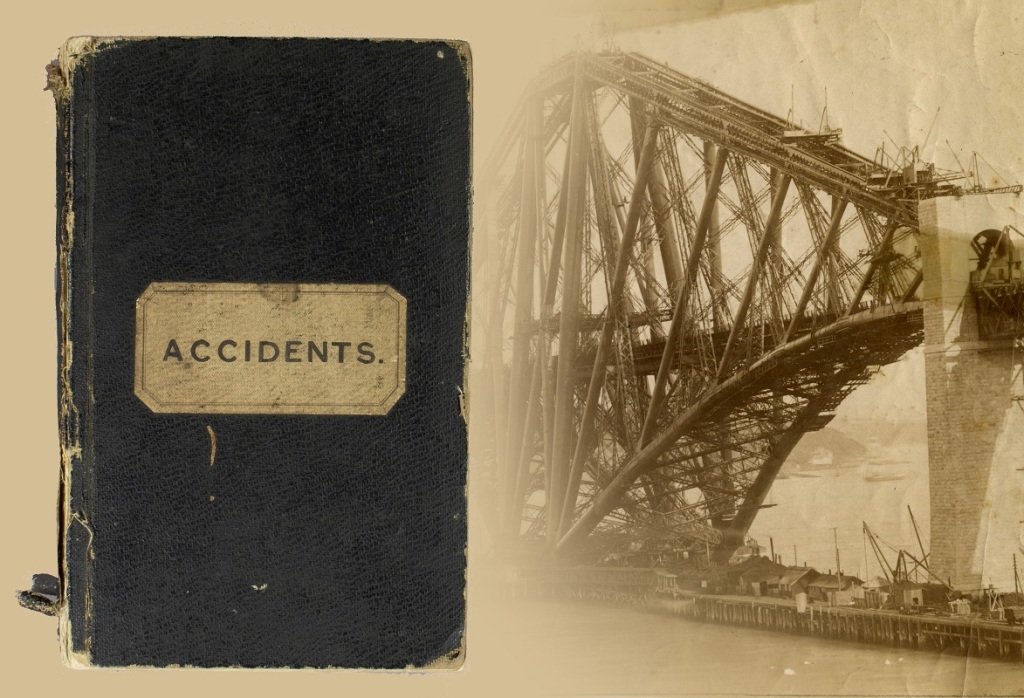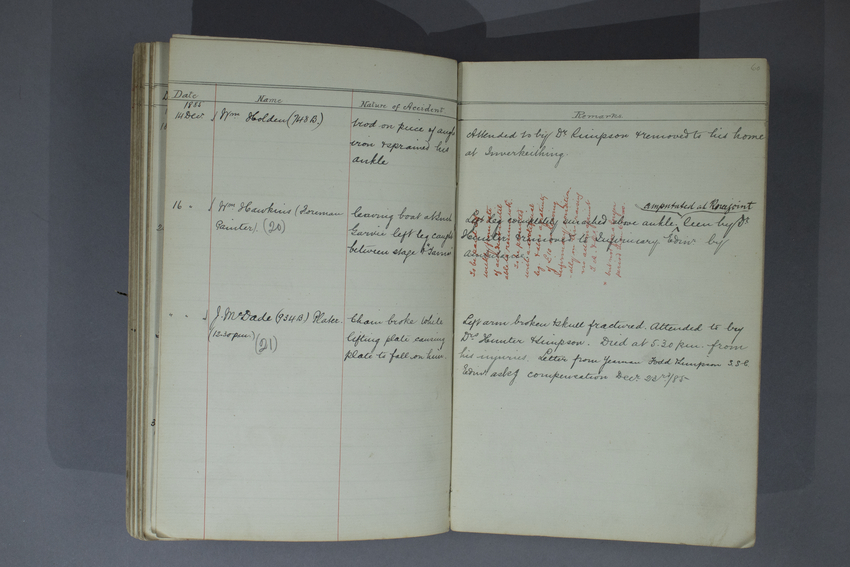The Forth Rail Bridge was officially opened on 4 March 1890 after an 18-year construction. The new bridge had to withstand the strong currents of the narrows between North and South Queensferry, and when completed, the Forth Bridge was the longest bridge of its type, a single cantilever, in the world.

The foundations of the bridge lie on the bed of the Firth of Forth and island of Inchgarvie. One of the earliest stages of construction was to create huge wrought iron blocks, known as caissons, into position to effectively hold back the water and allow the workers, known as the Briggers, to the bed to lay the foundations. The 6 caissons were assembled on land and towed out by barges to be sunk into place. This was an exceptionally dangerous phase in the construction; caissons were known to burst, flooding the space inside, and access to the site involved unsteady transfers from barge to pier in the swirling tides of the Forth. The first caisson was launched 140 years ago this year.
To mark the anniversary of this key date, Museums & Galleries Edinburgh have published on Capital Collections a book listing all the accidents taking place during the early phase of construction of the Bridge in the 1880s.

The book was recently donated to Queensferry Museum and is a perfect compliment to the existing collections telling the story of the three Forth bridges. Its plain cover belies the detail of its contents; a catalogue of injuries ranging from mild bruising to some of the most gruesome and painful accidents imaginable. It is a unique insight into the construction of the bridge, the lives of the Briggers working on the iconic bridge and the dangers they faced, and also how they were treated by the earliest ambulance services in Scotland. It records 197 accidents, including nine fatalities, over a 32-month period from 1883 to 1886. As far as we know, it is one of the only surviving working documents from the Bridge’s construction.
Consider for instance Matthew Snowden (listed as accident 61), who was lucky enough to get away with just hurting his right hand after falling off a jetty. He was seen by the doctor and soon returned to work. Or poor William Hawkins, a foreman painter who was crushed by a barge, the Tamar, while coming ashore. His left leg was completely smashed above the ankle and had to be amputated at the knee. He was “removed to Infirmary Edinr. by Ambulance”. Hawkins survived, and was paid until he was able to come back to work.

Read the full volume on www.capitalcollections.org.uk
This wonderful small book has already started to fill in gaps in what is known about the rest of the Forth Bridge collection held at Queensferry Museum; a medal has been linked back to its original owner, Patrick Lee for the first time. Lee was listed in the book when he caught his sleeve on a drilling machine on the 5 February 1886. Thankfully he only sustained a bruised wrist.
Alongside the details of accidents, the book also gives information on sick leave, compensation and any resulting sick pay. It lists the various doctors who attended the injured; among them a certain Dr. Hunter who was one of the Forth Bridge doctors and also the South Queensferry GP.
Collections staff at the City of Edinburgh Museums & Galleries approached a group of Queensferry local historians about the book. Since 2005, The Briggers (taking their name from the nickname of construction workers), have been collecting and researching the history of the Rail Bridge. In 2009 they compiled a list of all known deaths which took place during the bridge’s construction, so it seemed fitting to let them know about the Accidents book.
Thanks to tireless efforts of The Briggers, the book has been entirely transcribed. The full text is now available on Capital Collections, the image library for Edinburgh Libraries, Museums & Galleries. Anyone looking at these pages will be able to search for names of relatives working on the Bridge and find out what happened to them.
The Briggers continue to analyse the book and compare it with other existing records. Already, they are aware of one death previously unrecorded and are starting to put together enough information for an emerging picture of how accidents were treated. Who knows what more questions this book will answer?
